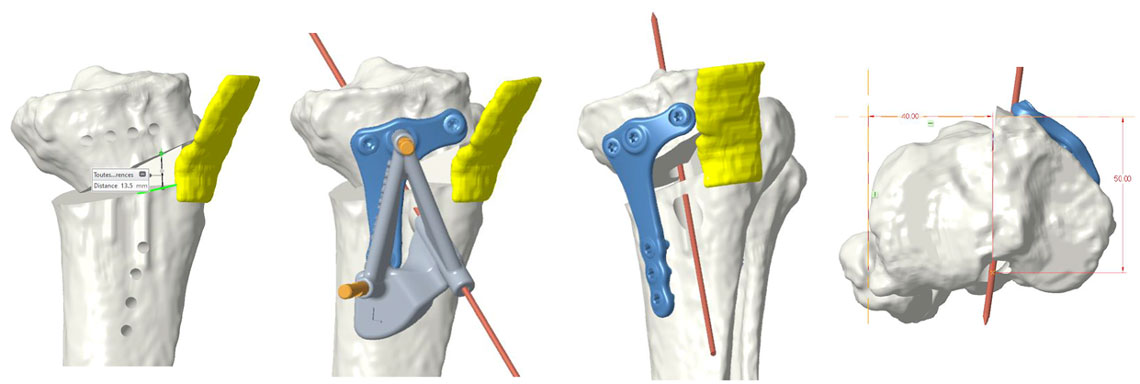The goals of this clinical case are to discuss the different therapeutic options in case of vicious callus of the proximal tibia, to discuss the physical examination of an unstable knee, and to propose an innovative technique. Stay tuned for Part 2!
- 32-year-old female
- Occasional skier
- Knee trauma skiing 3 years ago operated on with an anteromedial proximal tibial plate
- Her main complaints are pain and subjective knee instability.

In view of the lateral radiography, which test(s) do you expect to be positive in your physical examination?
- ✔️ Reverse pivot shift test
- ✔️ Posterior sag sign
The lateral X-ray shows a posterior displacement of the tibia due to a PCL torn. In those cases, you should find a positive reverse pivot shift test and a posterior sag sign
Nielsen S, Helmig P. Posterior instability of the knee joint. An experimental study. Arch Orthop Trauma Surg (1978). 1986;105(2):121-5. doi: 10.1007/BF00455846. PMID: 3718189.
Which type of surgery should be proposed to the patient?
- ✔️ Shiba osteotomy
A conservative treatment should be proposed for this very young patient even if a TKA may be a legitimate treatment according to other surgeons. No UKA should be proposed because of the PCL lesion.
Mody BS, Mody K. Arthroplasty in young adults: options, techniques, trends, and results. Curr Rev Musculoskelet Med. 2014 Jun;7(2):131-5. doi: 10.1007/s12178-014-9213-3. PMID: 24677185; PMCID: PMC4092200
Kwon HM, Kang KT, Kim JH, Park KK. Medial unicompartmental knee arthroplasty to patients with a ligamentous deficiency can cause biomechanically poor outcomes. Knee Surg Sports Traumatol Arthrosc. 2020 Sep;28(9):2846-2853. doi: 10.1007/s00167-019-05636-7. Epub 2019 Jul 25. PMID: 31346669.
In this case, our choice was to perform a shiba osteotomy (intra-articular osteotomy) thanks to a custom-made cutting guide (NEWCLIP), and a PCL reconstruction thanks to a posterior tibial tendon allograft.










Comments
(No subject)
HT OPEN WEDGING OSTEOTOMY AND correction of tibial slopeI do not cearly evaluate pcl and acl ligament. If injures plasty